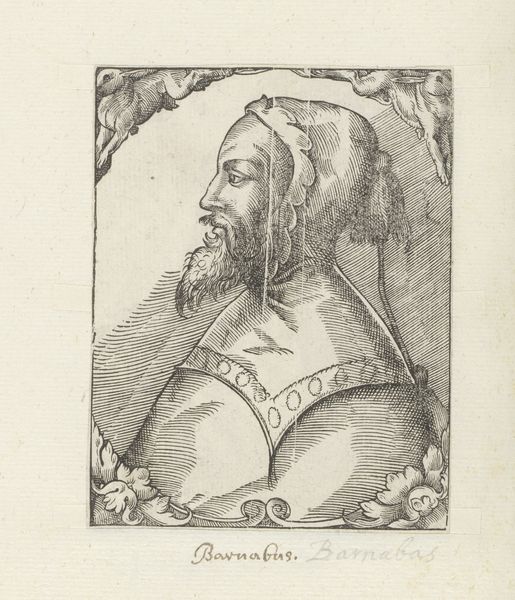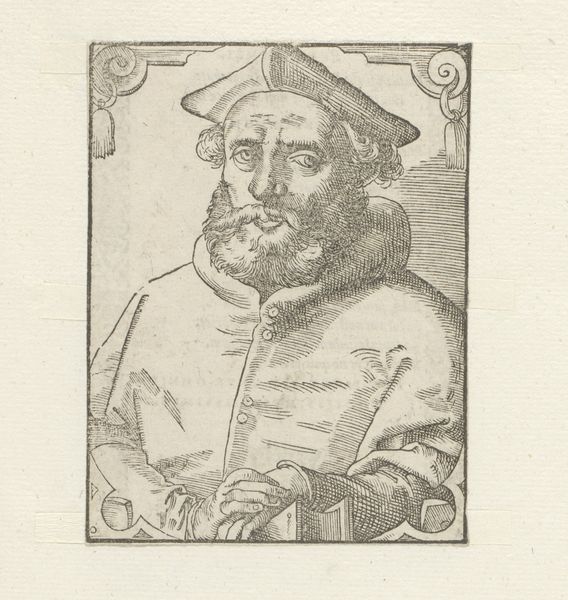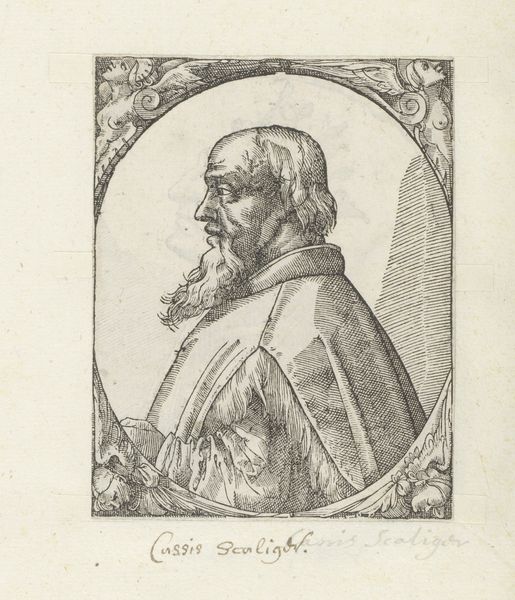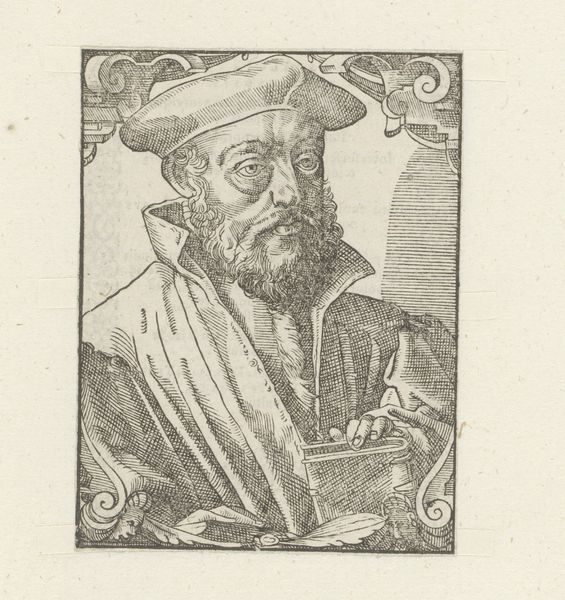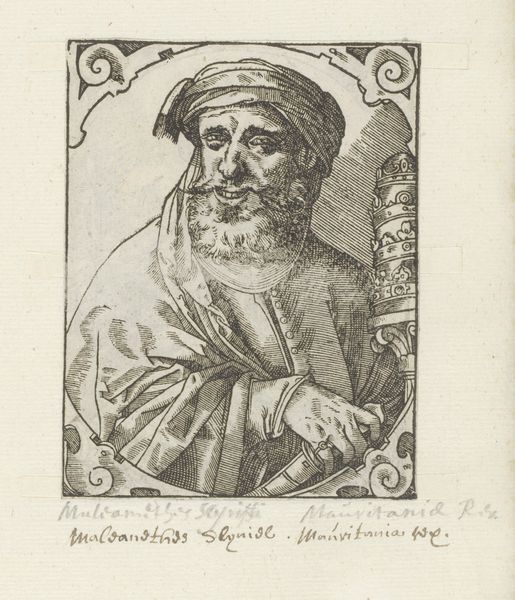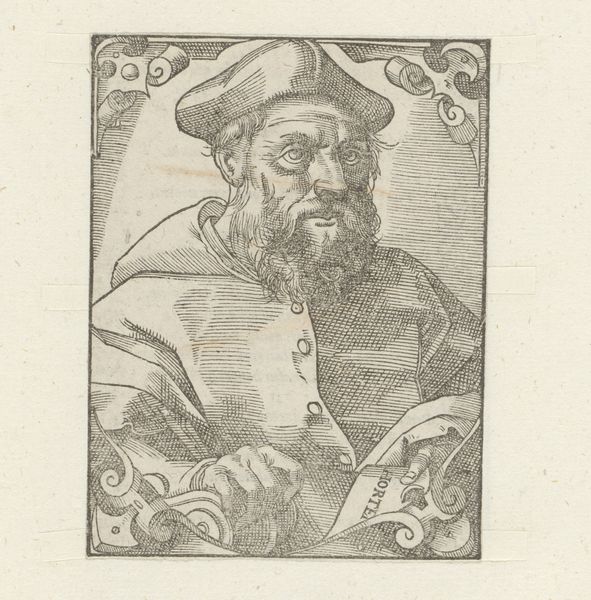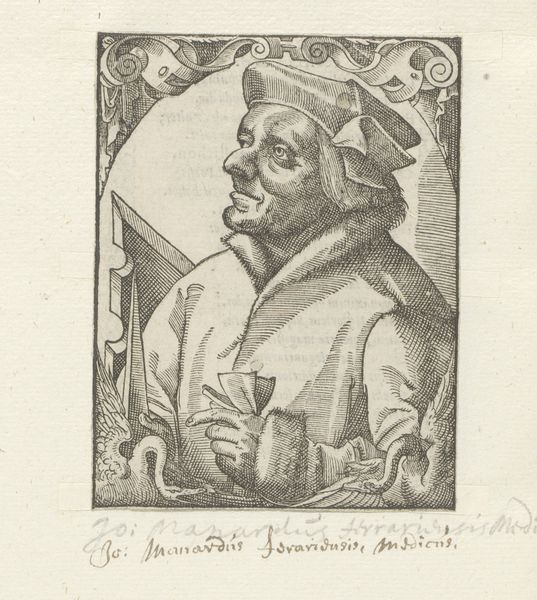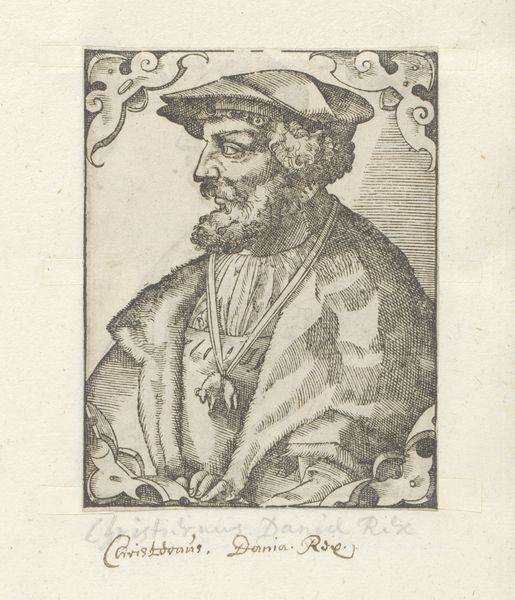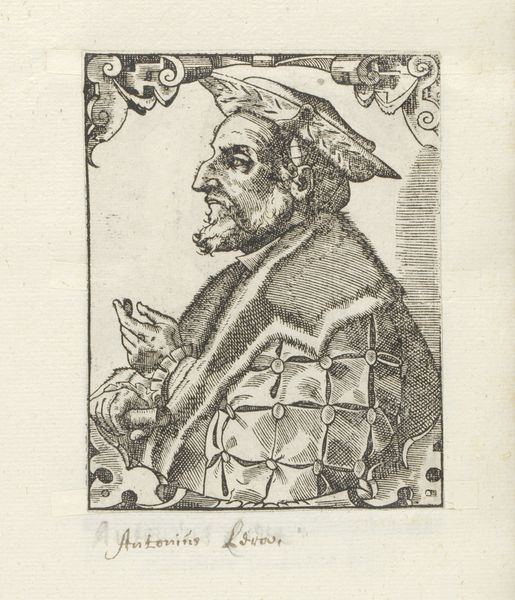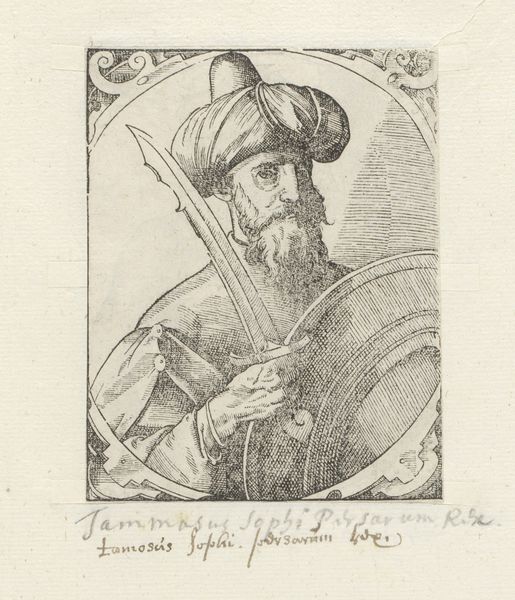
print, engraving
#
portrait
# print
#
old engraving style
#
figuration
#
form
#
11_renaissance
#
line
#
history-painting
#
academic-art
#
italian-renaissance
#
engraving
Dimensions: height 108 mm, width 84 mm
Copyright: Rijks Museum: Open Domain
Curator: This engaging print, dating from the second half of the 16th century, is titled "Portret van Maximiliaan Sforza." It is an engraving rendering a profile view of the Duke of Milan. Editor: My first impression is one of controlled austerity, although it's also somewhat softened by the decorative flourishes around the central portrait. There is a definite formality and stoicism to this depiction of Sforza. Curator: Indeed. Engravings such as these served multiple functions at the time. They obviously served as a record of important figures, and they were also easily disseminated across Europe, allowing for the creation of a visual culture centered on prominent rulers. This engraving’s function was largely tied to image making. Editor: Which then ties directly into politics and power. The way Sforza is presented communicates specific ideas about leadership and status. I’m looking at the fur trim on his robes, his hat, and his resolute expression—everything speaks to wealth and authority, but within a very rigid societal structure. The choice of presenting him in profile seems very deliberate too. It feels somewhat detached, as though reminding the viewer of his inaccessibility and power. Curator: Absolutely. While we don't know the name of the artist, they operated within a clear set of conventions of the era for depicting nobility. The cross-hatching technique also reflects that period, allowing for the modulation of light and shadow to give the image a sense of depth. Editor: And it speaks to the performative aspects of identity. What did it mean to be seen a leader, to present oneself as a man worthy of power and respect? In a broader sense, I think prints like these contributed to maintaining established hierarchies, shaping public perception and legitimizing the social order. They had an impact, beyond the merely aesthetic. Curator: Well observed. Prints of this nature contributed significantly to the dissemination of cultural and political ideas during a crucial period of European history, and the presentation of powerful individuals was carefully thought through to solidify the place of leaders like Maximiliaan Sforza. Editor: It makes me consider who benefitted, whose narrative was promoted, and how this portrayal reflects and possibly obscures broader social truths. Curator: I think that’s a valid, and critical, takeaway. It allows us to see these images with more awareness of their context, function and impact.
Comments
No comments
Be the first to comment and join the conversation on the ultimate creative platform.

